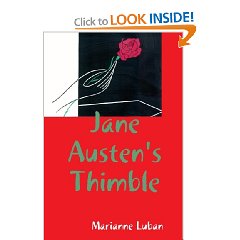As people have long suspected, Yuya has a good chance of being of foreign extraction and may have even registed a higher Asiatic ratio had I not been forced to give him the high modern Egyptian 12/14 numbers at D8S1179 by default--just to get the necessary 9th locus for the program. I don't know what to think when the "probability" for Eurasian is about as great as sub-Saharan! I used the Egyptian numbers because I did not know what other population to take them from. They come from the DNA of 140 unrelated people of Cairo, a northern city with a mixed population. This may screw up the results, but to what degree I do not know. In fact, I added the same locus to all the STRs of the royals, but had to give it in different combinations of 14 and 12. Next is Thuya and, again, according to this program, scholars seem to have been correct. She seems not to have been foreign but an African type. You have to click on the images to read them. The incredible thing is that, at D7S820, Thuya has an allele that doesn't show up again in the family until the larger foetus from the tomb of Tutankhamun. It is 13 and doesn't show up much in Egypt, being the lowest one at that locus. Where does it do best? By far the best in Bari, Italy, that ancient Greek settlement, the same place a rare allele of the mother of Ramesses III [at a different locus] does best. What gives?
Next is their daughter, Queen Tiye.
Her husband, Amenhotep III, seems overwhelmingly sub-Saharan:
Up next is the KV55 Individual, the son of the king and queen, who is predicted as possibly Asiatic!
His sister, the Younger Lady, on the other hand does not have so much Asiatic probability.
Yet when I assigned Tutankhamun a double 14 at D8S1179[highest Egyptian number at that locus], his sub-Saharan probability ratio became lessened.
Do I know how accurate all this can be by adding a default marker and only having 9? No! As you can see, 34 values are preferred for each person and I was only able to provide 18, two of them being guesses. That is not enough, but the 18 can give a glimpse into the truth. The program is not biased toward sub-Saharan, as is evidenced by the assignments of Yuya, the patriarch of the clan. But it's hard to know what is really going on here. Just an experiment using what data there is.


















